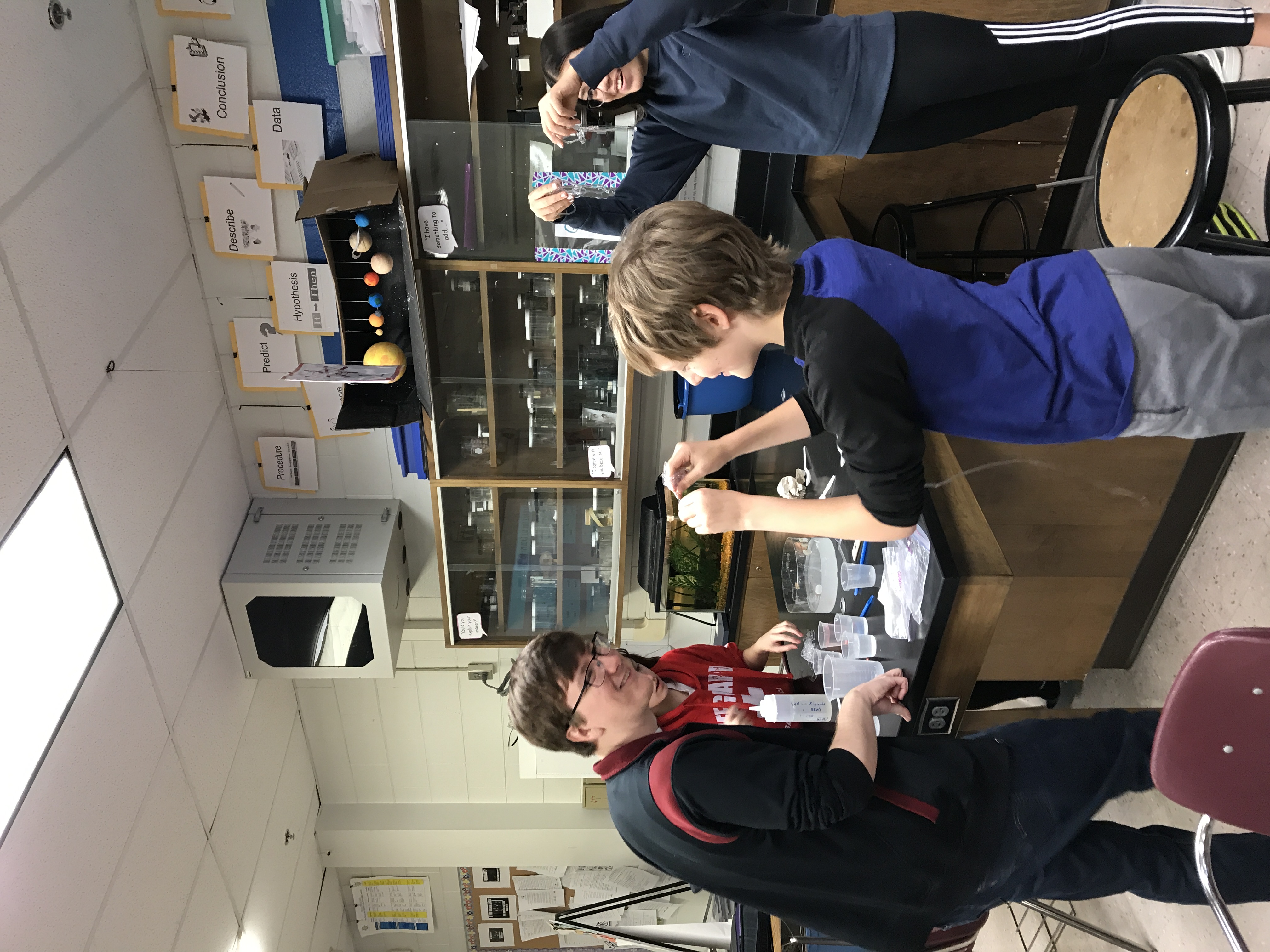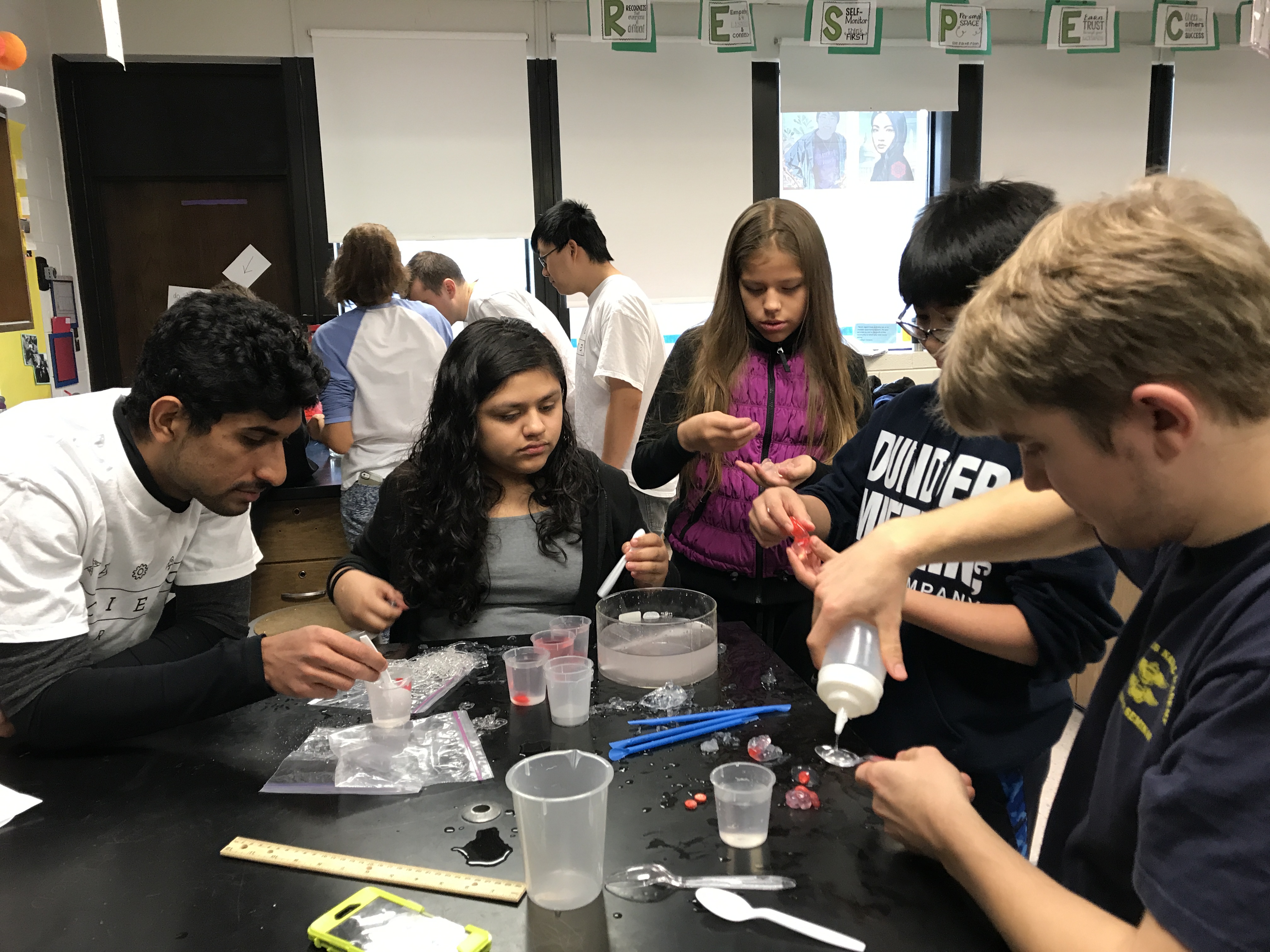11.06.2019
Experiment leaders: Joe Hassler and Supriya Ghosh
This experiment was conducted at Murray Middle School and was hosted by Ms. Nix. Two
sessions were conducted during the week with a group of ~20-30 7 th and 8 th graders. The
experiment, alginate snakes was chosen because it is a very hands-on activity that students are
typically excited about. The lesson goals were to introduce the students to what a polymer is and
what they can be used for, to identify parameters in the system which could impact the properties
of the resulting material.
To begin, Joe and Supriya gave a short (~8 min) presentation on how polymers can be assembled
from small building blocks and then assembled into gels via crosslinking with divalent cations.
The relevance of these materials for controlled drug delivery was stressed.
Students were then broken up into groups of 4-5 and sent to the lab area. Each group of students
was supervised by one mentor. Each group had a large bowl of saturated calcium chloride
solution, a squirt bottle with pre-dissolved sodium alginate colored with a food coloring, spoons/
measuring cups of various shapes, a bag of Smarties candies that were stained with red food
coloring, and a few (~10) plastic cups.
Round 1 of experiments: The goal of the first phase of the experiments was to allow the students
to play with the materials and make alginate snakes. Simply squirt some of the sodium alginate
solution into the calcium chloride and the calcium crosslinks the alginate into a tubular gel,
encapsulating the food coloring. Students were enthusiastic, albeit distracted, by this phase of the
experiments. The second goal of the experiment was to develop a technique to make a gel which
could eventually encapsulate a “drug” or smarty. This was meant to be done by trial and error to
see what shapes the students could make.

Round 2 of experiments: Encapsulating the drug and measuring the time of release
In this round, the students were tasked with designing a gel that could fully encapsulate a dyed
smarty and delay the release of food coloring into the bulk solution compared to a control with
no encapsulation. Students were guided to this type of experiment set-up using the plastic cups
filled with water as “release testing zones” and a phone as a timer.

Round 3: Modification of the gel to better control release time
To transition to this round, the mentors guided a discussion of the parameters involved in the
system – gel shape, the concentration of calcium in the bowl, size of the gel, etc. Students could then
individually choose which parameters to test and make a few gels at 2-3 levels of their chosen
parameters. The release experiment designed in round 2 was then applied again to see if the
parameter they chose could be used to tune the rate of “drug” release. Time became limiting
during this step and minimal testing was done – but the students had fun playing with the gels!